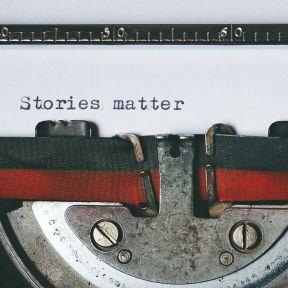The Mountaintop of the Midlife.
Assessing your life from the midpoint.
Reviewed by Jessica Schrader
KEY POINTS-
People often share similar issues and feelings about reaching midlife.
Reaching the midpoint of your life can be thought of like hiking up a mountain.
Instead of regretting the choices you made on the way up, take pleasure in making new choices on the way down.
Sometimes the topic of conversation in therapy is a factor of the age of the client. One such topic is the idea of middle age, or as it seems to be more popularly called now, the midlife. Many times, clients have issues and feelings about reaching this point in their lives that seem unique and specific to their situation. This is certainly the case, but I find clients also get a feeling of relief learning that many people their age are dealing with similar issues.
The midlife is something you don’t always see coming. You sort of wake up one day and find yourself there. It happens the way Ernest Hemingway describes going broke: gradually, then suddenly. One day you’re in your late 20s, growing into a career, celebrating weddings and births, still in the know about what music is cool, and watching your hair just begin to thin ever so slightly. The next day, the music you like is considered old-school, your clothes from high school are considered vintage, and the bald spot on the back of your head has grown to meet the receding hairline in the front.
Reaching the midpoint of your life is like hiking up a mountain. From birth you grow up at the foot of the mountain, looking up at it looming in the distance, with the knowledge that one day you will set off to climb it. Eventually that day comes, and as you embark on the journey of life you push forward, hiking uphill. Sometimes the path is easy, sometimes it is hard, but no matter how the trail or the view changes, you continue your slow climb.
When you began this climb, you were joined by other people your age, friends who were born at the same time and grew up with you, but as you continue the journey you start to separate. At different forks in the road, you choose different paths. Every now and then you stop and sit for a spell, taking a rest, admiring the view. Sometimes you hike along a ridge with an amazing view, but you’re so busy getting to where you want to go you don’t even notice. Sometimes there are rock slides that send you sliding downhill a bit, but then you find a shortcut that gets you further up the mountain. Whatever your path, you are always working towards the same goal: to get to the top of the mountain.
As your journey progresses, you might find yourself forgetting about the destination. You get so used to climbing that it becomes second nature to you. The burn in your thighs from walking uphill becomes normal. The view of the mountaintop in the distance becomes a familiar sight, something you take for granted. But then one day you get to the top of the mountain, where you admire the view, catch your breath, and then think: Now what?
For most of us, what happens next is a serious assessment of our lives at this point. After all this focus on the climb, we now have a moment to get introspective and look within, taking stock of where we are, how we got here, and how we feel about it. We’ve reached the mountaintop, but is it the right mountaintop? Is it the mountaintop we pictured this whole time? The fact is the place you’ve reached at the top of this mountain is most likely not where you pictured yourself ending up when you started your journey. This difference between where you thought you were going and where you actually ended up can be the source of much of the anxiety we associate with the idea of a mid-life crisis.
Imagine you’ve reached the top of the mountain of midlife and you’re standing there taking stock of where you stand. You might find yourself on a boulder in a rocky outcropping, or in a grassy meadow atop a plateau, or on a dry, dusty ledge. You might find yourself alone, or with a hiking partner. You might be happy with where you are, or you might not be satisfied with where you find yourself. So you look back at the direction you came from, second-guessing the choices you made to get here, wishing you had taken a different route. You get so preoccupied with analyzing the choices you made along the way that you neglect to consider the path in front of you. You’ve spent so much time working towards the goal of reaching the mountaintop, you can’t imagine dedicating that kind of energy to the path down the other side. In fact, you’re not even thinking about the way down. You’re still fixated on the way up, even though that part of your journey has come to an end.
There’s a clock ticking this whole time, by the way. You can’t just remain on this spot on the mountaintop considering all this. It’s like there’s a giant invisible hand behind you, gently pushing you downhill. It’s ironic because you could have used the support of this invisible hand while you were climbing uphill, and you don’t really need it going down. If you haven’t been able to accept where you’ve found yourself on the mountaintop, then you’re not going to be aware of the invisible hand pushing you down the other side of the mountain. Your heels will be dug in, dragging in the dirt. Your focus will be on the path behind you instead of the one in front of you, and this will make for an unpleasant journey. If you’re not careful, you’ll find yourself fully feeling the stress and unhappiness behind this conflict for the rest of your life without even realizing what’s causing it. And that would be a shame, because the journey down the other side of the mountain has the possibility to be wonderful. The views on the way down are just as scenic as the ones on the way up.
When you’ve accepted the contradiction between where you thought you’d be and where you are, it can be much easier to enjoy the second half of the journey of your life. You know where you’re going now, after all. Unlike your hike up to the top of the mountain, there’s only one destination for all of us at this point. We’re all eventually going to get to the flat ground on the other side of the mountain. So why not enjoy the rest of the journey? Accept where you’re starting from and walk downhill with a spring in your step. Instead of kicking yourself for the choices you made on the way up, take pleasure in making new choices on the way down. Keep your gaze steady on the path ahead of you, not the one behind you.
Assessing your life from the midpoint.
Reviewed by Jessica Schrader
KEY POINTS-
People often share similar issues and feelings about reaching midlife.
Reaching the midpoint of your life can be thought of like hiking up a mountain.
Instead of regretting the choices you made on the way up, take pleasure in making new choices on the way down.
Sometimes the topic of conversation in therapy is a factor of the age of the client. One such topic is the idea of middle age, or as it seems to be more popularly called now, the midlife. Many times, clients have issues and feelings about reaching this point in their lives that seem unique and specific to their situation. This is certainly the case, but I find clients also get a feeling of relief learning that many people their age are dealing with similar issues.
The midlife is something you don’t always see coming. You sort of wake up one day and find yourself there. It happens the way Ernest Hemingway describes going broke: gradually, then suddenly. One day you’re in your late 20s, growing into a career, celebrating weddings and births, still in the know about what music is cool, and watching your hair just begin to thin ever so slightly. The next day, the music you like is considered old-school, your clothes from high school are considered vintage, and the bald spot on the back of your head has grown to meet the receding hairline in the front.
Reaching the midpoint of your life is like hiking up a mountain. From birth you grow up at the foot of the mountain, looking up at it looming in the distance, with the knowledge that one day you will set off to climb it. Eventually that day comes, and as you embark on the journey of life you push forward, hiking uphill. Sometimes the path is easy, sometimes it is hard, but no matter how the trail or the view changes, you continue your slow climb.
When you began this climb, you were joined by other people your age, friends who were born at the same time and grew up with you, but as you continue the journey you start to separate. At different forks in the road, you choose different paths. Every now and then you stop and sit for a spell, taking a rest, admiring the view. Sometimes you hike along a ridge with an amazing view, but you’re so busy getting to where you want to go you don’t even notice. Sometimes there are rock slides that send you sliding downhill a bit, but then you find a shortcut that gets you further up the mountain. Whatever your path, you are always working towards the same goal: to get to the top of the mountain.
As your journey progresses, you might find yourself forgetting about the destination. You get so used to climbing that it becomes second nature to you. The burn in your thighs from walking uphill becomes normal. The view of the mountaintop in the distance becomes a familiar sight, something you take for granted. But then one day you get to the top of the mountain, where you admire the view, catch your breath, and then think: Now what?
For most of us, what happens next is a serious assessment of our lives at this point. After all this focus on the climb, we now have a moment to get introspective and look within, taking stock of where we are, how we got here, and how we feel about it. We’ve reached the mountaintop, but is it the right mountaintop? Is it the mountaintop we pictured this whole time? The fact is the place you’ve reached at the top of this mountain is most likely not where you pictured yourself ending up when you started your journey. This difference between where you thought you were going and where you actually ended up can be the source of much of the anxiety we associate with the idea of a mid-life crisis.
Imagine you’ve reached the top of the mountain of midlife and you’re standing there taking stock of where you stand. You might find yourself on a boulder in a rocky outcropping, or in a grassy meadow atop a plateau, or on a dry, dusty ledge. You might find yourself alone, or with a hiking partner. You might be happy with where you are, or you might not be satisfied with where you find yourself. So you look back at the direction you came from, second-guessing the choices you made to get here, wishing you had taken a different route. You get so preoccupied with analyzing the choices you made along the way that you neglect to consider the path in front of you. You’ve spent so much time working towards the goal of reaching the mountaintop, you can’t imagine dedicating that kind of energy to the path down the other side. In fact, you’re not even thinking about the way down. You’re still fixated on the way up, even though that part of your journey has come to an end.
There’s a clock ticking this whole time, by the way. You can’t just remain on this spot on the mountaintop considering all this. It’s like there’s a giant invisible hand behind you, gently pushing you downhill. It’s ironic because you could have used the support of this invisible hand while you were climbing uphill, and you don’t really need it going down. If you haven’t been able to accept where you’ve found yourself on the mountaintop, then you’re not going to be aware of the invisible hand pushing you down the other side of the mountain. Your heels will be dug in, dragging in the dirt. Your focus will be on the path behind you instead of the one in front of you, and this will make for an unpleasant journey. If you’re not careful, you’ll find yourself fully feeling the stress and unhappiness behind this conflict for the rest of your life without even realizing what’s causing it. And that would be a shame, because the journey down the other side of the mountain has the possibility to be wonderful. The views on the way down are just as scenic as the ones on the way up.
When you’ve accepted the contradiction between where you thought you’d be and where you are, it can be much easier to enjoy the second half of the journey of your life. You know where you’re going now, after all. Unlike your hike up to the top of the mountain, there’s only one destination for all of us at this point. We’re all eventually going to get to the flat ground on the other side of the mountain. So why not enjoy the rest of the journey? Accept where you’re starting from and walk downhill with a spring in your step. Instead of kicking yourself for the choices you made on the way up, take pleasure in making new choices on the way down. Keep your gaze steady on the path ahead of you, not the one behind you.
The Mountaintop of the Midlife.
Assessing your life from the midpoint.
Reviewed by Jessica Schrader
KEY POINTS-
People often share similar issues and feelings about reaching midlife.
Reaching the midpoint of your life can be thought of like hiking up a mountain.
Instead of regretting the choices you made on the way up, take pleasure in making new choices on the way down.
Sometimes the topic of conversation in therapy is a factor of the age of the client. One such topic is the idea of middle age, or as it seems to be more popularly called now, the midlife. Many times, clients have issues and feelings about reaching this point in their lives that seem unique and specific to their situation. This is certainly the case, but I find clients also get a feeling of relief learning that many people their age are dealing with similar issues.
The midlife is something you don’t always see coming. You sort of wake up one day and find yourself there. It happens the way Ernest Hemingway describes going broke: gradually, then suddenly. One day you’re in your late 20s, growing into a career, celebrating weddings and births, still in the know about what music is cool, and watching your hair just begin to thin ever so slightly. The next day, the music you like is considered old-school, your clothes from high school are considered vintage, and the bald spot on the back of your head has grown to meet the receding hairline in the front.
Reaching the midpoint of your life is like hiking up a mountain. From birth you grow up at the foot of the mountain, looking up at it looming in the distance, with the knowledge that one day you will set off to climb it. Eventually that day comes, and as you embark on the journey of life you push forward, hiking uphill. Sometimes the path is easy, sometimes it is hard, but no matter how the trail or the view changes, you continue your slow climb.
When you began this climb, you were joined by other people your age, friends who were born at the same time and grew up with you, but as you continue the journey you start to separate. At different forks in the road, you choose different paths. Every now and then you stop and sit for a spell, taking a rest, admiring the view. Sometimes you hike along a ridge with an amazing view, but you’re so busy getting to where you want to go you don’t even notice. Sometimes there are rock slides that send you sliding downhill a bit, but then you find a shortcut that gets you further up the mountain. Whatever your path, you are always working towards the same goal: to get to the top of the mountain.
As your journey progresses, you might find yourself forgetting about the destination. You get so used to climbing that it becomes second nature to you. The burn in your thighs from walking uphill becomes normal. The view of the mountaintop in the distance becomes a familiar sight, something you take for granted. But then one day you get to the top of the mountain, where you admire the view, catch your breath, and then think: Now what?
For most of us, what happens next is a serious assessment of our lives at this point. After all this focus on the climb, we now have a moment to get introspective and look within, taking stock of where we are, how we got here, and how we feel about it. We’ve reached the mountaintop, but is it the right mountaintop? Is it the mountaintop we pictured this whole time? The fact is the place you’ve reached at the top of this mountain is most likely not where you pictured yourself ending up when you started your journey. This difference between where you thought you were going and where you actually ended up can be the source of much of the anxiety we associate with the idea of a mid-life crisis.
Imagine you’ve reached the top of the mountain of midlife and you’re standing there taking stock of where you stand. You might find yourself on a boulder in a rocky outcropping, or in a grassy meadow atop a plateau, or on a dry, dusty ledge. You might find yourself alone, or with a hiking partner. You might be happy with where you are, or you might not be satisfied with where you find yourself. So you look back at the direction you came from, second-guessing the choices you made to get here, wishing you had taken a different route. You get so preoccupied with analyzing the choices you made along the way that you neglect to consider the path in front of you. You’ve spent so much time working towards the goal of reaching the mountaintop, you can’t imagine dedicating that kind of energy to the path down the other side. In fact, you’re not even thinking about the way down. You’re still fixated on the way up, even though that part of your journey has come to an end.
There’s a clock ticking this whole time, by the way. You can’t just remain on this spot on the mountaintop considering all this. It’s like there’s a giant invisible hand behind you, gently pushing you downhill. It’s ironic because you could have used the support of this invisible hand while you were climbing uphill, and you don’t really need it going down. If you haven’t been able to accept where you’ve found yourself on the mountaintop, then you’re not going to be aware of the invisible hand pushing you down the other side of the mountain. Your heels will be dug in, dragging in the dirt. Your focus will be on the path behind you instead of the one in front of you, and this will make for an unpleasant journey. If you’re not careful, you’ll find yourself fully feeling the stress and unhappiness behind this conflict for the rest of your life without even realizing what’s causing it. And that would be a shame, because the journey down the other side of the mountain has the possibility to be wonderful. The views on the way down are just as scenic as the ones on the way up.
When you’ve accepted the contradiction between where you thought you’d be and where you are, it can be much easier to enjoy the second half of the journey of your life. You know where you’re going now, after all. Unlike your hike up to the top of the mountain, there’s only one destination for all of us at this point. We’re all eventually going to get to the flat ground on the other side of the mountain. So why not enjoy the rest of the journey? Accept where you’re starting from and walk downhill with a spring in your step. Instead of kicking yourself for the choices you made on the way up, take pleasure in making new choices on the way down. Keep your gaze steady on the path ahead of you, not the one behind you.
0 Comentários
0 Compartilhamentos
2KB Visualizações
0 Anterior












